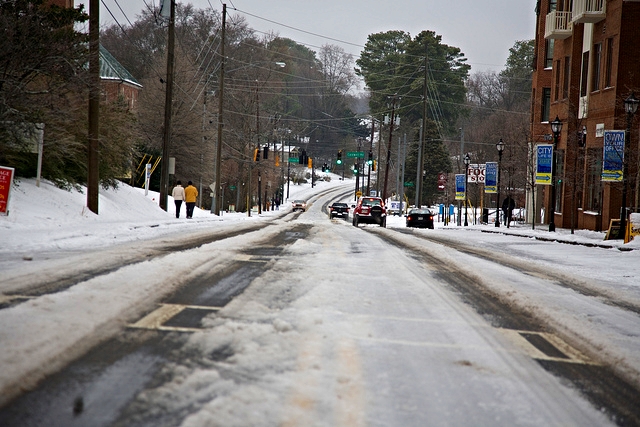While there are many safety benefits, autonomous vehicles have not yet been perfected. Sure they don’t drive drunk or send text messages while driving on the expressway, but they still have their shortcomings. Neal Boudette of The New York Times recently reviewed the Top 5 things that are giving self-driving cars issues while they continue to develop:
1) Unpredictable Human Error Accidents
While self-driving cars use computer algorithms in order to obey the rules of the road and other basic driving functions, they have no control over how other drivers behave. What is a self-driving car to do when a manually driven car goes 20 miles per hour over the speed limit or is barreling down a one-way street going the wrong direction? Boudette writes, “One solution is to equip cars with transponders that communicate their position, speed and direction to other vehicles. This is known as vehicle-to-vehicle communication, and it is similar to how airplanes avoid each other in the air.”
2) Bad Weather Accidents
Self-driving cars can easily navigate Michigan roads during the summer months, but what happens when snow, ice and fog start to factor into dangerous road conditions? Autonomous vehicles utilize cameras that track lines on the pavement in order to keep the vehicle in its lane, but that becomes a problem when snow is covering the ground. As Boudette points out, a large puddle cased by a heavy rainstorm may look like blacktop to the car’s sensors. “In reports that Google and others have filed with California authorities about their on-road tests of autonomous cars, weather was a prime cause of system failures after which human drivers had to take back control,” Boudette reports.
3) Detour Auto Accidents
As road conditions and road repairs develop, maps can become out of date quickly. This can become an obstacle for self-driving vehicles such as Google’s cars which “rely heavily on highly detailed three-dimensional maps- far more detailed than those in Google maps- that communicate the location of intersections, stop signs, on-ramps and building with the cars’ computer systems.”
4) It Might Be a Puddle. Or Not.
Self-Driving cars struggle to differentiate between obstacles in the road such as puddles, potholes or an oil spot. Using their radar, lasers and HD cameras to scan the roads, the vehicle can only scan what is on the road surface, not what’s below. Boudette recalled a recent ride he took in a self-driving car when the vehicle unexpectedly slowed down because it was confused by a dark area on the road which turned out to just be a shadow from an overpass.
“Google and other companies hope more precise laser-based sensors, known as lidar, and other technology will make it easier for driverless cars to spot potholes-as opposed to shadows-and avoid them. Another possible solution: smart roadways that communicate with automated vehicles and warn them of hazards ahead like traffic accidents and potholes,” Boudette explained.
5) Making Tough Decisions
Perhaps the most complicated of them all, self-driving vehicles may be forced to make tough and complicated ethical driving decisions. Boudette gives an example: “In the midst of busy traffic, a ball bounces into the road, pursued by two running children. If a self-driving car’s only options are to hit the children or veer right and strike a telephone pole, potentially injuring or killing the car’s occupants, what does it do?” For now, there is no concrete answer to this dilemma.
While we wait for self-driving cars to work out the kinks, we still need to pay attention to human drivers who struggle to make the right decisions while on the road. If you or somebody you know has been involved in a car accident, call The Michigan Law Firm, PLLC. Work with a lawyer who is experienced in handing accidents of all sizes. Our legal team will work alongside you to identify your area of needs and get you the appropriate help. Call us today at 844.4MI.FIRM for a free consultation.




